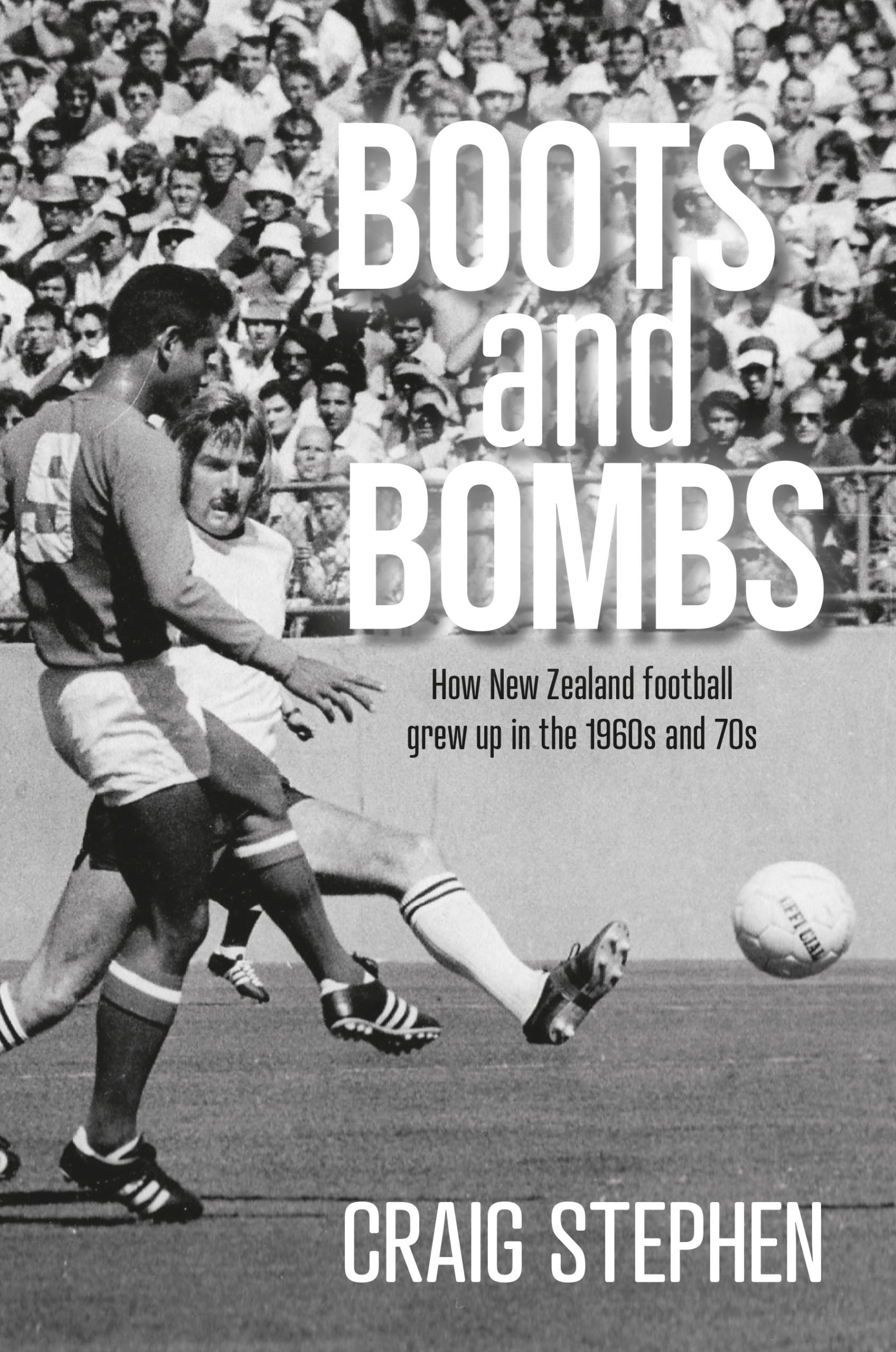Boots and Bombs
8 Boots and Bombs: How New Zealand football grew up in the 1960s and 70s, by Craig Stephen (2023, ISBN 978-0-473-67266-9).
Boots and Bombs: How New Zealand football grew up in the 1960s and 70s, by Craig Stephen (2023, ISBN 978-0-473-67266-9).
Not many books start with an account of a hairy plane landing in a war zone. But that’s how it all starts in Boots and Bombs, with the New Zealand men’s football team (the term All Whites was still years away) landing in Vietnam in 1967 for a tournament. There is really good analysis on the background on this which is fair to say was complex. And the detail of the tour is like something out of a movie. A different time, and a different world.
The usual gradual drop was forgone as the plane dived from several thousand feet. Everyone had to hold on tight. There were a few green faces, ears struggling with the pressure, and some stomachs were turned upside down. The descent seemed never-ending and when the plane did land it was an unorthodox landing.
This is a book about the progression of football in this country from that semi crash landing through to the World Cup qualification campaign leading up to the trip to Spain. It’s about a period when the sport in this country found its own identity. And it details a little known tournament behind enemy lines in Vietnam.
It starts before then with details of the formation of the sport here, the class divisions that separated its progression compared to rugby union and the cute UK focussed drive in the 1960s to develop the game here.
For example, a big venture was the tour by an “FA XI” in 1961. The side was captained by Tom Finney, who had retired a year earlier, but did include some 20 year-old called Bobby Moore.
That era saw the game grow largely driven by post war emigration from post-was Europe. For example the Zealandia club in Wellington was a club for Dutch expats. It was later merged with Wellington United; hence the orange shirts.
But international football was rare; during the 60s there was a five year gap between internationals.
It is around this time that the name Charlie Dempsey first pops up. For the rest of the book he continues to occasionally feature. It’s a really interesting charting of how to get ahead in sporting administration or politics.
There was an ambitious multi continental tour though which resulted in all the fallouts you’d expect. One player pulled out, slammed the coaching team on return, and was suspended for life as a consequence. There were inevitable money worries. But this tale from Germany says is all
The German hosts presented the entire team with large beer mugs known as steins, but they were forbidden to drink out of them by their manager. The players were in no mood for this meddling and told the official to back off.
The rejuvenation of interest here began with the well documented visit from Manchester United team in 1968. A huge coup; Charlton, Best et al. Not so well remembered is a tour by Scotland shortly after with some little known Alex Fergusson guy on board.
These tours gave the sport just the boost it really needed but the way the game was being governed was still a long way off.
“That 11-0 game was farcical because in those days you used to have three selectors, one from Auckland, one from Christchurch and one from Wellington. And these blokes, now I’m not saying they didn’t know anything about football, but they would be the ones who picked the team. And they’d pick a few from each centre, and it was not necessarily the best side, they picked players from their own areas.
For the first time New Zealand tried to qualify for the 970 World Cup. This is seen as the start of genuine international ambition and was arguably the real start of the road to Spain. This consisted of a three way tournament with North Korea held in Israel. Naturally, North Korea pulled out and the hosts won both matches.
The review of that campaign (Dempsey again) concluded that a major difference was the Israel had a national league.. So this led to the formation of New Zealand’s first league, sponsored by Rothmans. This was the first time that New Zealand took itself seriously.
Fun facts.
Gracie Fields kicked off in a Chatham Cup semi-final in 1945.
In the early 1960s Australian FA was banned from FIFA over accusations of poaching touring European players. Seems about right.
Auckland v Manchester United in 1968 was played in front of a full house at Carlaw Park after three rugby league games had been played there the previous day.
New Zealand U23’s first goal against Scotland was scored by future test cricketer Mark Burgess.

I would like to buy a copy of Boots and Bombs.
Guyon, email me on craig_j_stephen@hotmail.com and I’ll sort you out
Just watched TV News re this book. Really interesting as my husband Ken was also in this team.
Came home with many stories, re snakes and going over the pitch re bombs before they ran on for game.
Many memories and photos from the tour and great to see the retired players on TV
I would like to buy this book
How do I get a copy of this book. Gordon Smith was my father
Hi
I am trying to get hold of a copy of the Boots & Bombs book. Gordon Smith was my father
Cheers
Russell Smith
Hi Russell, did you manage to get copy?
Thanks
Heidi
Hi there I would like to get a copy of this book. My father is Gary Lake.
Cheers
Heidi